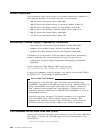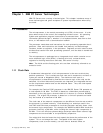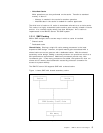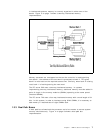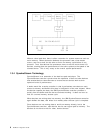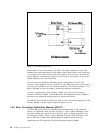
1.2 Multiprocessing
Multiprocessing uses two or more processors in a system to increase
throughput. Multiprocessing yields high performance for CPU intensive
applications such as database and client/server applications.
There are two types of multiprocessing:
•
Asymmetric Multiprocessing
•
Symmetric Multiprocessing
Asymmetric Multiprocessing:
In asymmetric multiprocessing the program tasks
(or threads) are strictly divided by type between processors and each processor
has its own memory address space. These features make asymmetric
multiprocessing difficult to implement.
Symmetric Multiprocessing (SMP):
Symmetric multiprocessing means that any
processor has access to all system resources including memory and I/O devices.
Threads are divided evenly between processors regardless of type. A process is
never forced to execute on a particular processor.
Symmetric multiprocessing is easier to implement in network operating systems
(NOSs) and is the method used most often in operating systems that support
multiprocessing. It is the technology currently used by OS/2 SMP, Banyan Vines,
SCO UNIX, Windows NT, and UnixWare 2.0.
The IBM PC Server 320, 520, and 720 support SMP. The PC Server 320 and 520
support two-way SMP via an additional Pentium processor in a socket on the
planar board. The 720 supports two-to-six way SMP via additional processor
complexes.
1.3 Memory
The system design of PC servers (in fact all microprocessor-based systems) is
centered around the basic memory access operation. System designers must
always
tune
this operation to be as fast as possible in order to achieve the
highest possible performance.
Processor architectures always allow a certain number of clock cycles in order
to read or write information to system memory. If the system design allows this
to be completed in the given number of clock cycles, then this is called a zero
wait state design.
If for some reason the operation does not complete in the given number of
clocks, the processor must
wait
by inserting extra
states
into the basic operation.
These are called
wait states
and are always an integer multiple of clock cycles.
The challenge is that as each new generation of processors is clocked faster, it
becomes more expensive to incorporate memory devices that have access times
allowing zero wait designs. For example, state of the art Dynamic Random
Access Memory, or DRAM, has a typical access time of about 60 nanoseconds
(ns). A 60 ns DRAM is not fast enough to permit a zero wait state design with a
Pentium class processor. Static RAM, or SRAM, has an access time of less than
10 ns. A 10 ns SRAM design would allow for zero waits at current processor
speeds but would be prohibitively expensive to implement as main memory. A
basic trade-off that all system designers must face is simply that as the access
time goes down, the price goes up.
Chapter 1. IBM PC Server Technologies 3







